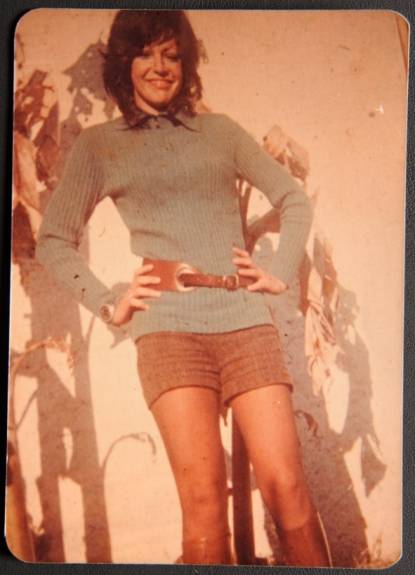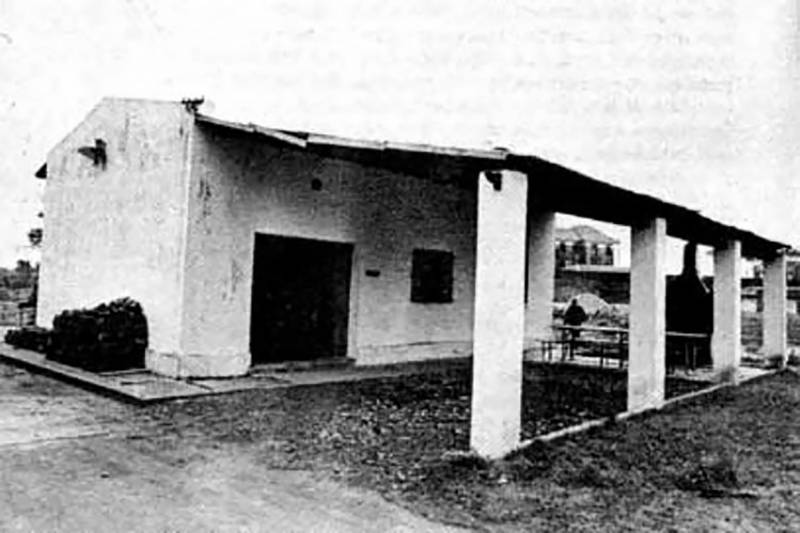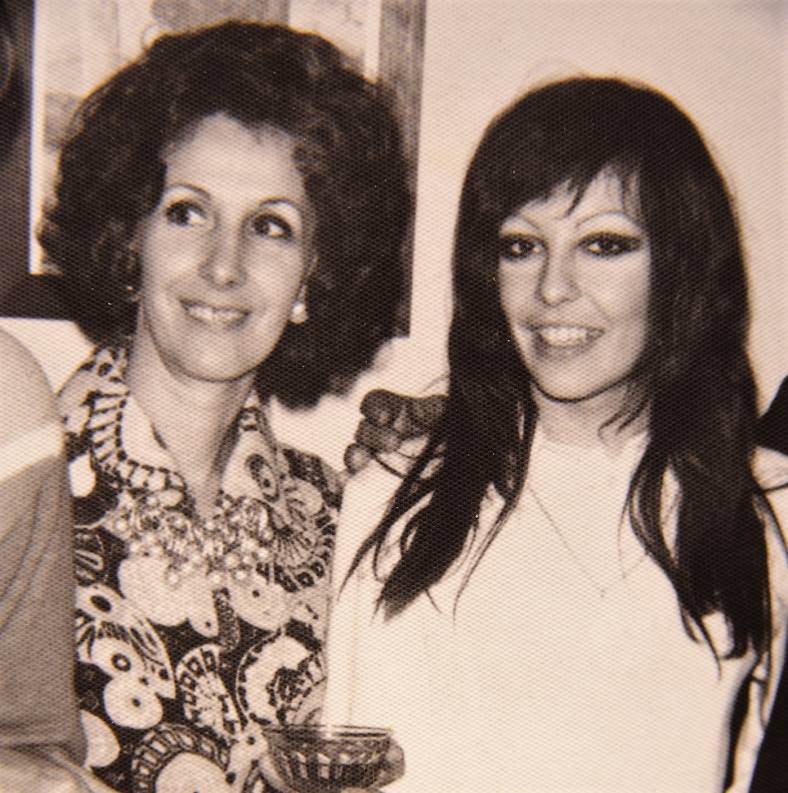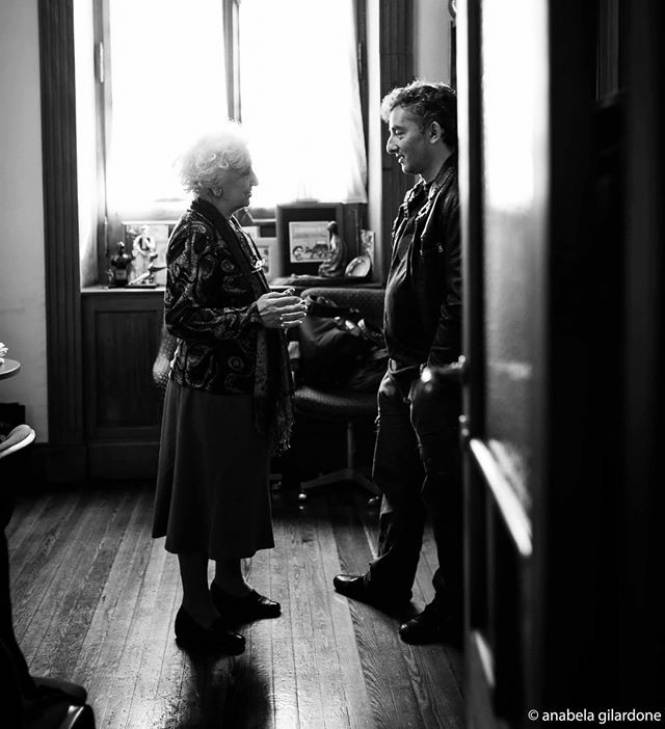The last time Estela de Carlotto spoke with Laura was on November 16, 1977. The oldest of her four children lived in hiding, from house to house. Every time she called the school where her mother worked, she pretended to be someone else.
–You know, Estela, lately I'm not feeling very well.
–Ay, please, Silvia. Be careful, Estela asked her daughter, thinking that maybe she was sick.
–I think I should go to the gynecologist– she said.

Until today, nobody knows where Laura was kidnapped. She was 22 years old, studied History at the National University of La Plata and was a member of the University Peronist Youth (JUP). But there are testimonies of survivors who saw her in the clandestine detention and torture center La Cacha, near La Plata. But nothing else is known.
María Laura Bretal is one of the few survivors who were kidnapped there during 1978. Left activist, sociologist, she testified in several trials: “I was kidnapped on May 5 with my three-year-old daughter. I was four months pregnant”.
In those days, one of the repressors who guarded her, while she was hooded and shackled, told María Laura that this place was called La Cacha in honor of Cachavacha, the witch of Hijitus, a cartoon series that was popular at that time. That witch had a magic broom with a super power: it disappears what it swept.
In that center that was 200 meters from Lisandro Olmos Prison, María Laura Bretal was surprised: she was not the only one pregnant. In La Cacha there were also Rita, seven months pregnant, and Rosita, eight months pregnant. She met them when she spent a week in a room with them.
In La Cacha the kidnapped, as in other centers, called themselves by nicknames. It was one of the modes of resistance to the depersonalization imposed by State terrorism. María Laura was called "Panzona" (Paunchy). Rita was actually Laura Carlotto, but María Laura would know this later, years after having gone free.

"When I saw them for the first time, I could not believe they had been there that long. It did not enter my head. Rita coped with the situation with great strength”, recalls Maria Laura. “I was desperate. I preferred not to have a bite to eat. The first month was very hard. Rita encouraged me: 'You have to keep going, day by day, for your daughter'".
Rosita was the first of three to give birth. She had three children waiting for her outside. The guards were slow to move her. Days later they told them that Rosita had had a boy and had regained her freedom.
A week later, Rita started with contractions. They let her walk through La Cacha. When the pain increased, the comrades shouted at the guards to please not make her wait until the last moment. María Laura had a nervous breakdown and started crying.
"The guards laughed their asses off. They didn´t really want to leave the building. They took a long time to take her" she says. The testimony of Bretal placed the birth of Laura's son at the ‘78 World Cup. The guards used to listen to the matches on the radio, at full volume.
It is not yet clear at what time or where Rita's son was born. But in the middle of the World Cup –which opened on June 1– she was transferred somewhere to give birth. June 2, 1978 was Friday. At 19:15, Argentina played the first game of the World Cup against Hungary, on River Plate Satdium.
36 years passed until the testimonies of those who shared captivity with Rita (Bretal but also María Inés Paleo, Alcira Ríos, Norma Aquino) joined with other evidences. Because those people told what Rita said when she returned to La Cacha.

They had taken her to a military hospital, far away, where she gave birth shackled and hooded. Her baby had been a boy. She had held him in her arms for just a few hours, until she was ordered to hand it to someone. She resisted. They gave her an injection. She did not remember what happened next, but when she woke up she asked about the baby. They told her that they had given him to her mother. That Mrs. Carlotto had accepted him, on the condition of not seeing her anymore. Those who knew her in La Cacha after giving birth remember that she was distressed.
The puzzle still has loose pieces. But on August 5, 2014 the main ones fit: Ignacio, a musician from Olavarría, knew that he was the son of Laura and Walmir "Puño" Montoya, that he was the grandson of Estela de Carlotto, the president of the Grandmothers of the Plaza de Mayo.
Justice is still investigating how the son of a young woman –killed in August 1978, when Laura's riddled body was handed over to her family– ended up at the home of two farmhands in the countryside.
They testified in court that their employer, a well-known and powerful man in the area, close to the military, offered them an abandoned baby. In early June, the farmhands received a call to search for the newborn in La Plata. And there they were, accompanied by the boss. A doctor from Olavarría signed the birth certificate –it was false– and registered the baby as the couple's son, born in the owner's house, on June 2, 1978. That was the day that Argentina defeated Hungary 2 to 0 at the River Stadium, in the first match of the World Cup. That was the day the boss ordered not to talk about it again.
 Estela de Carlotto charla con su nieto. Foto: Anabela Gilardone
Estela de Carlotto charla con su nieto. Foto: Anabela Gilardone
But 36 years later, someone opened his mouth: Ignacio could be the son of the disappeared. The young man contacted Abuelas. He became the grandson 114: Ignacio Montoya Carlotto. Weeks later, in a hug with his grandmother Estela, he stepped on the River field –is fanatic fan– with a message: "Do not stay with the doubt about your identity." Because there are still about 300 babies to be found, including Elisa Elvira Cayul's daughter, Rosita.